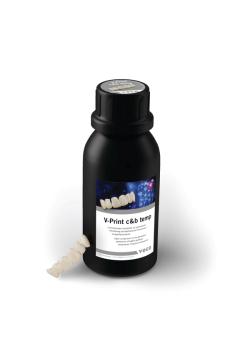- About Us
- Advertise
- Editorial
- Contact Us
- Terms and Conditions
- Privacy Policy
- Do Not Sell My Personal Information
© 2025 MJH Life Sciences™ and Dental Products Report. All rights reserved.
9 digital lab trends you NEED to know [VIDEO]
Dentistry is advancing into the digital era faster than most had anticipated. Not many people can doubt that these digital trends will only accelerate. We believe the age of the Full Digital Lab is almost upon us. Here are nine things we see:
Dentistry is advancing into the digital era faster than most had anticipated. Not many people can doubt that these digital trends will only accelerate. We believe the age of the Full Digital Lab is almost upon us. Here are nine things we see:
New scanners make plaster models extinct
Recent scanning technology advancements, especially in terms of speed and accuracy, have made the use of intraoral scanners increasingly attractive for dentists, and we expect that application of digital impression-taking in clinics will truly boom. Labs that are directly connected to dental clinics that have such solutions will be able to receive digital impressions immediately, and start designing right away without casting a model. Naturally, the use of physical impressions will continue in some clinics or in specific situations that merit it. However, even with such cases, rather than using the impression to cast a model, labs will employ sophisticated impression scanners that can accurately scan the physical impression directly.
Read part 1 in this series: How to increase your business by going digital
Model production goes digital
Digital model-making is surging forward rapidly as better digital impression systems, new CAD software and improved manufacturing technologies provide model-making solutions at lower costs with higher accuracy and increased efficiency. More and more models will be created directly from digital impressions using CAD model design software and CAM model-making machines.
The new era of model-free crown
More and more labs will produce crowns and simple cases without models because accurate virtual articulators in the CAD software let them validate and adjust dynamic articulation using the intraoral scan or impression scan as input. Currently, most model-free crown production focuses on single crowns. However, in some cases, model-free workflows have already spread to more complex restorations such as bridges, and more advanced restoration types.
Must read: 5 ways to go digital the RIGHT way
Full digital crowns
Several years ago, market observers started speaking about full digital crowns; many listeners were skeptical. Today, we can already see this concept has advanced much faster than expected-largely driven by new materials such as full zircronia and IPS e.max. We expect this trend will only widen as new monolithic materials emerge. Full digital products will no longer be limited to copings. The combination of new materials and digital processing enhances accuracy, and enables labs to design full digital crowns for manufacturing in one or two materials without the time-consuming hand-veneering step.
Customized abutments will replace stock abutments
Generally, we will see an increased market penetration of implant cases, largely due to lower costs of implants and restorative components, and an increased use of CAD/CAM technologies. Naturally, in terms of optimal treatment, customized abutments represent the best choice for almost all abutment cases. Customized abutments allow for better fits, perfect emergence profiles and generally represent a better clinical solution for the customer. As digital design processes improve, the price of customized abutments will eventually become comparable to, and perhaps even lower, than those of stock abutments--a development that is already emerging in some markets. Labs with CAD/CAM are today saving costs, space and logistics by removing the need to store stock abutments. For technicians already engaged in a CAD workflow, adding the steps for customizing the abutment to the specific case follows easily. Industry experts predict that stock abutments will eventually disappear from the market.
Read part 2 in this series: How to take your lab from traditional to all-digital
There will be a complete lab software package
In the future, the leading CAD software systems will provide digital workflows covering the total spectrum of lab work. Software potentially can be developed to design any indication, and even combinations of indications, all in one go! Software is not the obstacle. The challenge is to manufacture all software-produced CAD designs in the right materials in terms of sufficient quality, lower costs and acceptable milling/printing times. We already see more and more manufacturing methods, cheaper manufacturing machines and new materials--such as monolithic ceramics and affordable 3D printers that directly support production of CAD designs. Driven by such developments and industry needs, the introductions of complete laboratory design software are not far away.
Increased planning services
Digital technologies help simplify case communication and provide tools for accomplishing complete case planning that is faster and more accurate than through traditional methods. Some CAD systems allow labs to design digital diagnostic wax-ups that are easily sent online to the dentist for 3D viewing in the clinic and, potentially, for discussion with the patient. Furthermore, CAD systems can bring together implant planning, prosthetics and production of surgical guides, enabling labs to provide full restorative packages before surgery.
Next page: Learn about a complete digital workflow ...
Complete digital workflow integration
More and more areas of dentistry are being touched by digital technologies, and we expect that soon all workflows will be integrated digitally, starting at the clinic, through the lab, on to manufacturing and ending with final treatment. Today, open intraoral scanning solutions kick off the digital workflow by enabling dentists to take digital impressions and send all digital case data directly to the lab using digital order forms. Administration systems for both practice management and lab management are being integrated, thereby improving communication, logistics and workflows between all parties.
The digital technician
The future technician will spend more time at the computer than at the workbench. But they will still need their technical and artistic skills. CAD software, no matter how intelligent, must be guided by a professional human touch when creating optimally esthetic and functional restorations. CAD software is a toolbox containing a wide range of methods that help improve quality and workflows. The efficiency and productivity this toolbox brings to labs will allow the digital dental technician more room to focus on providing services to dentists rather than restoration production alone.
Top photo: Digital Vision / Getty Image
Editor’s note: This article is the third in a four-part series. Make sure you check out upcoming issues of Dental Lab Products to find out even more about how your lab can go digital the RIGHT way. Don’t miss it!
Tais Clausen is the CTO and co-founder of 3Shape. Since the founding of 3Shape, Clausen has been a key visionary driver in the company’s technology development. His close, almost daily involvement with dental labs and clinics using 3Shape worldwide is the integral factor underlying his recognized expertise when it comes to the current and future needs of modern dental businesses.



